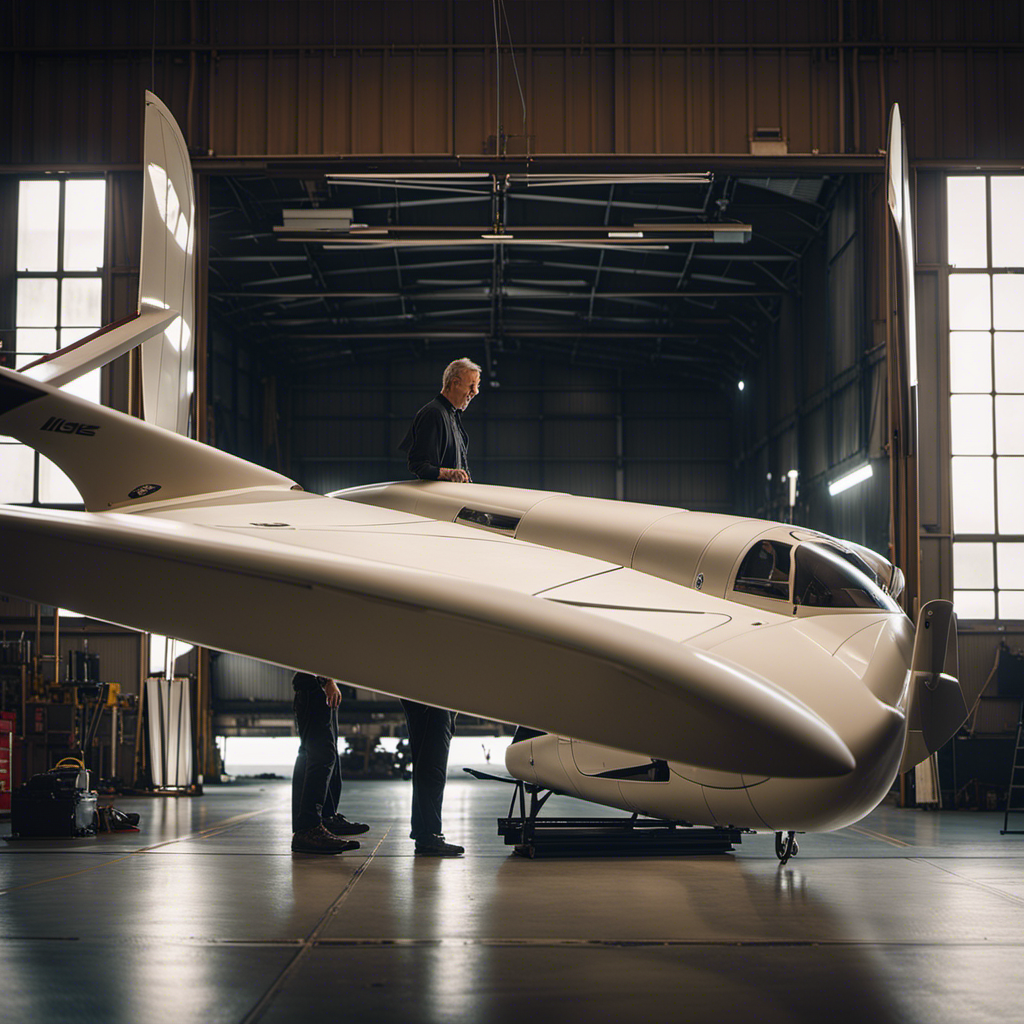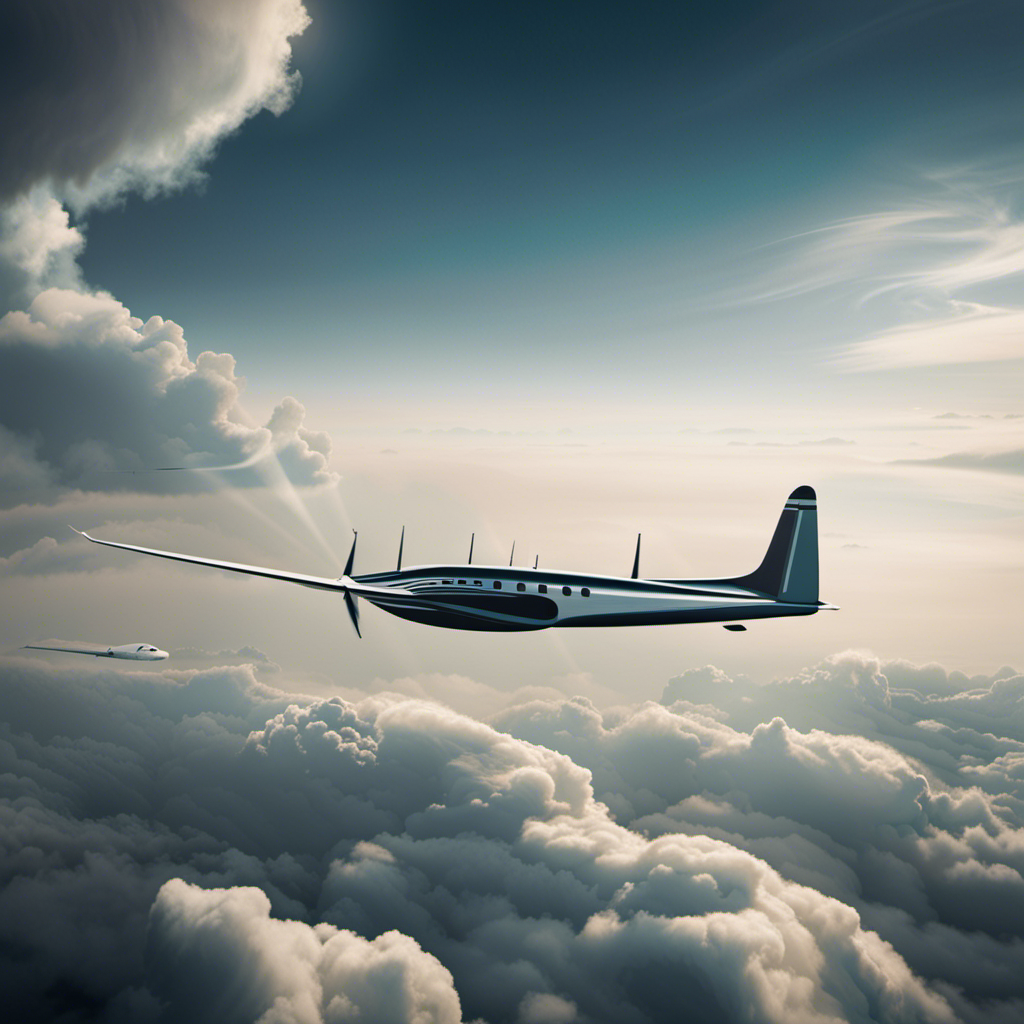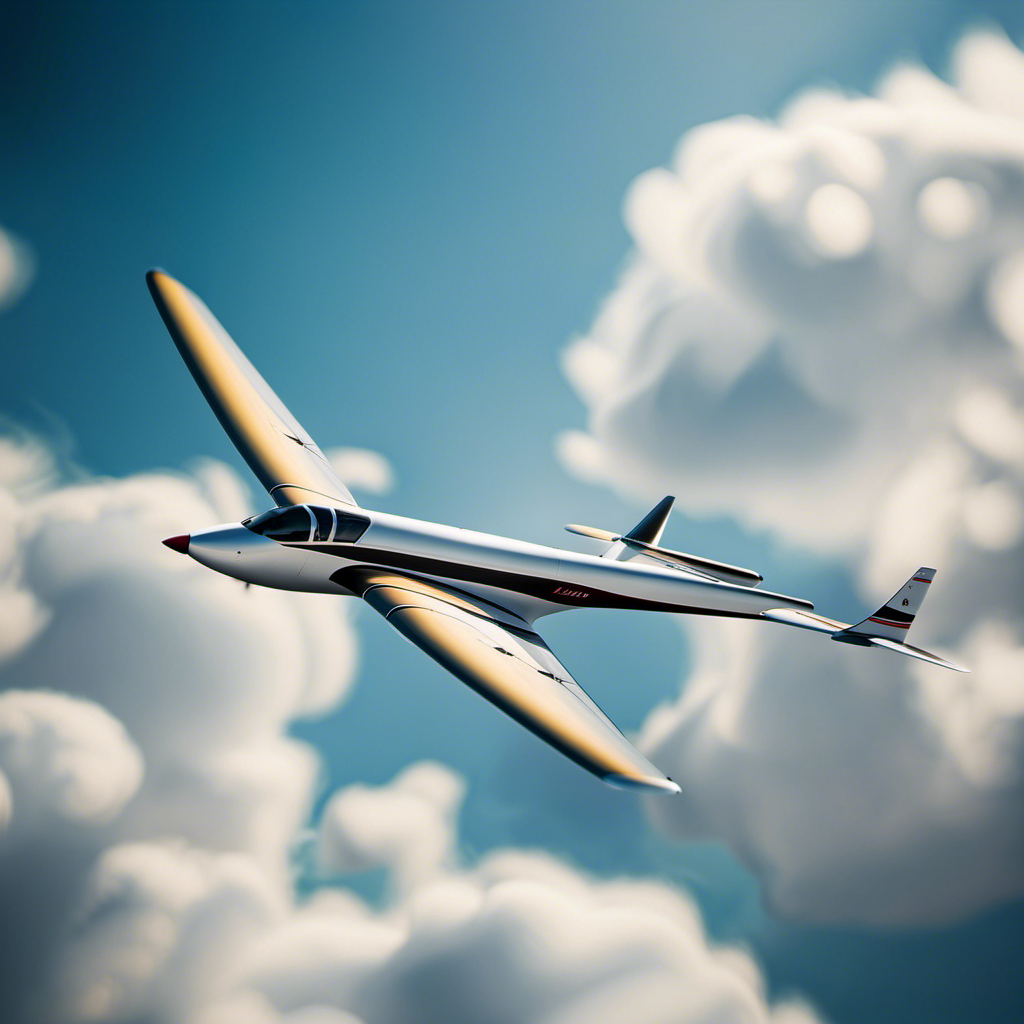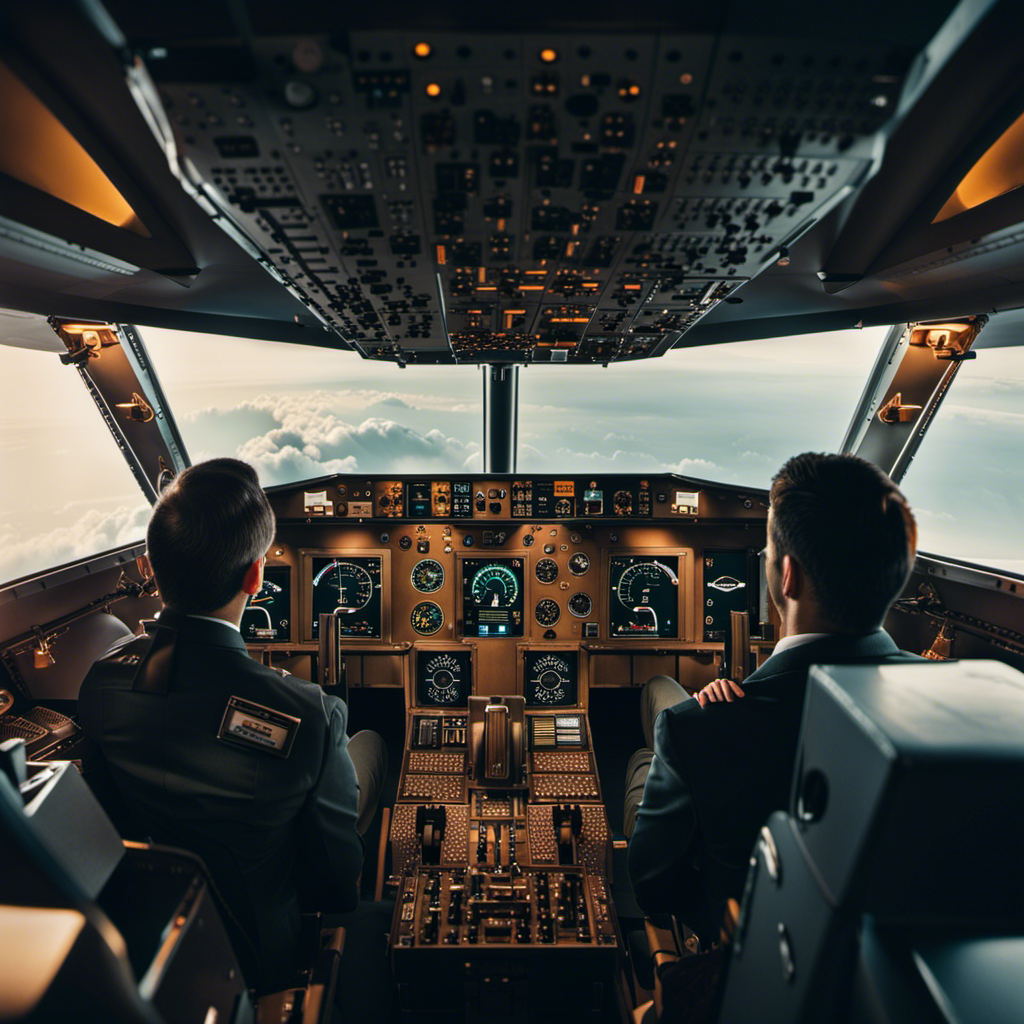Imagine yourself soaring high in the sky, effortlessly navigating through the skies with skill and expertise.
Now, picture yourself mastering the art of finding the best glide angle.
In this article, we dive into the world of glide angles, exploring the factors that influence them and how to calculate the optimal angle for different aircraft.
Discover the safety tips, real-life examples, and advancements in technology that will elevate your understanding of glide angles.
Get ready to take flight like never before.
Key Takeaways
- Factors affecting glide angle include aircraft design, weight and balance, airspeed and altitude, wind conditions, and aerodynamic characteristics.
- The optimal glide angle varies for different types of aircraft such as general aviation, commercial, and military aircraft.
- The glide angle is crucial in emergency situations as it helps maximize the distance covered during forced landings. Training, practice, and effective glide angle management are important for safety.
- Preparation for emergency scenarios involves familiarizing with emergency checklists, regularly practicing procedures, and understanding the importance of glide angle management.
What is Glide Angle?
The glide angle is the angle at which an aircraft descends through the air. It is a crucial parameter that determines the efficiency of an aircraft’s glide performance.
The glide angle is measured in degrees and is calculated by dividing the vertical descent distance by the horizontal distance traveled. A steeper glide angle indicates a faster descent, while a shallower angle allows for a longer glide.
Achieving the optimal glide angle is essential for maximizing the aircraft’s range during an emergency landing or engine failure. Several factors affect the glide angle, such as weight, air density, and the aircraft’s aerodynamic characteristics.
Factors Affecting Glide Angle
When considering factors affecting glide angle, it’s important to analyze aircraft design, weight and balance, airspeed and altitude, as well as wind conditions.
The specific design of an aircraft, including its wings, shape, and weight distribution, directly influences its glide angle.
Additionally, the weight and balance of the aircraft can impact its ability to maintain a steady glide.
The airspeed and altitude at which the aircraft is flying, along with the current wind conditions, further influence the glide angle by affecting the overall aerodynamic performance of the aircraft.
Aircraft Design
You can optimize aircraft design to achieve the best glide angle. Here are four key considerations to keep in mind:
-
Wing Shape: The design of the wing plays a crucial role in determining the glide angle. A sleek, aerodynamic wing with high aspect ratio can reduce drag and increase lift, resulting in a better glide performance.
-
Weight Distribution: Proper distribution of weight is essential for achieving the ideal glide angle. Uneven weight distribution can lead to instability and affect the aircraft’s ability to maintain a steady glide.
-
Control Surfaces: The design and placement of control surfaces, such as flaps and ailerons, can significantly impact the glide angle. These surfaces allow the pilot to adjust the aircraft’s attitude and control its descent.
-
Drag Reduction: Minimizing drag is vital for optimizing the glide angle. Streamlined fuselage design, smooth surface finishes, and the use of fairings can help reduce drag and improve the overall efficiency of the aircraft’s glide.
By considering these factors in aircraft design, you can achieve the best possible glide angle for improved performance and safety.
Now, let’s delve into the next aspect: weight and balance.
Weight and Balance
To achieve optimal performance and stability, it’s important to carefully consider weight distribution and balance in aircraft design. By properly distributing the weight throughout the aircraft, you can ensure that it maintains its intended center of gravity. This is crucial for maintaining stability and control during flight.
Imbalances in weight can lead to issues such as difficulty in controlling the aircraft or excessive stress on certain components. Additionally, weight distribution affects the overall performance of the aircraft, including its maneuverability and fuel efficiency. Therefore, it is essential to carefully calculate and adjust the weight and balance of the aircraft to ensure safe and efficient operation.
Once the weight and balance are properly established, you can move on to considering other important factors such as airspeed and altitude.
Airspeed and Altitude
Maintaining a proper airspeed and altitude is crucial for safe and efficient flight. As a pilot, you must be constantly vigilant to ensure that you are flying within the recommended parameters. The table below provides a quick reference guide for the recommended airspeeds and altitudes for different phases of flight.
| Phase of Flight | Airspeed (Knots) | Altitude (Feet) |
|---|---|---|
| Takeoff | 80-100 | As Required |
| Climb | 65-85 | As Required |
| Cruise | 100-150 | As Required |
| Descent | 75-95 | As Required |
Wind Conditions
Now that you understand the importance of airspeed and altitude in determining the best glide angle, let’s shift our focus to another crucial factor: wind conditions.
Wind can have a significant impact on your aircraft’s glide performance. When flying against a headwind, your groundspeed decreases, which means you cover less distance over time. This can result in a steeper glide angle as you need to maintain a higher descent rate to compensate for the reduced groundspeed.
Conversely, when flying with a tailwind, your groundspeed increases, allowing you to cover more distance. As a result, you can maintain a shallower glide angle, requiring a lower descent rate.
Understanding wind conditions and their effect on your glide angle is essential for optimizing your aircraft’s performance. Now, let’s delve into the process of calculating the glide angle.
Calculating Glide Angle
You can calculate the glide angle by dividing the vertical distance traveled by the horizontal distance covered. This calculation gives you an understanding of how efficiently an aircraft can glide through the air.
Here are three key factors to consider when calculating the glide angle:
-
Weight: The weight of the aircraft plays a crucial role in determining the glide angle. Heavier aircraft tend to have steeper glide angles as they require more lift to overcome gravity.
-
Wing Design: The shape and design of the wings also affect the glide angle. Wings with higher aspect ratios (span divided by average chord) generally produce lower glide angles, allowing for longer and more efficient glides.
-
Airspeed: The airspeed at which the aircraft is flying affects the glide angle. Lower airspeeds result in steeper glide angles, while higher airspeeds produce flatter glide angles.
Understanding these factors helps pilots determine the optimal glide angle for different aircraft. By making adjustments based on weight, wing design, and airspeed, pilots can maximize the efficiency and performance of their glides.
Optimal Glide Angle for Different Aircraft
In this discussion, you’ll explore the optimal glide angles for three different types of aircraft: General Aviation Aircraft, Commercial Aircraft, and Military Aircraft.
Understanding the unique characteristics and capabilities of each type will help you grasp the specific considerations and factors that influence their glide angles.
General Aviation Aircraft
General aviation aircraft often have a range of glide angles. These angles are determined by various factors, such as the design of the aircraft, its weight, and the configuration of its wings. The glide angle refers to the steepness of the descent when the engine is not providing thrust.
Pilots need to be aware of the optimal glide angle for their specific aircraft to ensure safe landings in case of an emergency. The best glide angle allows the aircraft to cover the greatest horizontal distance for a given loss of altitude. It is crucial to maintain control of the aircraft during a glide, making adjustments as necessary to maintain the desired glide angle.
Understanding the factors that affect the glide angle is essential for pilots to maximize the safety and efficiency of their general aviation flights.
Transitioning to the subsequent section about commercial aircraft, it is important to note that these larger planes also have specific glide angles that pilots must consider.
Commercial Aircraft
Commercial aircraft have specific rates of descent that pilots must take into account when preparing for landings. To ensure a safe and controlled descent, pilots rely on the aircraft’s glide angle, which is determined by several factors.
Here is a breakdown of the key considerations:
-
Aircraft weight: Heavier aircraft require a steeper glide angle to maintain the necessary lift for a safe landing.
-
Airspeed: The speed at which the aircraft is flying affects the glide angle. Higher airspeeds result in shallower glide angles.
-
Aerodynamic characteristics: Each aircraft has different aerodynamic properties that influence its glide angle. These properties are designed to optimize performance and safety.
-
Wind conditions: Wind direction and strength can impact the glide angle, requiring adjustments to maintain stability during descent.
With these factors in mind, pilots carefully calculate the glide angle to ensure a smooth and precise landing.
Transitioning to the subsequent section on military aircraft, it is important to note that their specific rates of descent differ due to unique design and operational requirements.
Military Aircraft
Now that we have discussed the glide angle of commercial aircraft, let’s shift our focus to military aircraft. Military aircraft are designed with different objectives in mind, such as combat maneuverability and speed. As a result, their glide angles may differ from those of commercial aircraft. To understand this better, let’s compare the glide angles of commercial and military aircraft in the following table:
| Aircraft Type | Glide Angle |
|---|---|
| Commercial | 15-20 degrees |
| Military | 25-30 degrees |
As you can see, military aircraft generally have a steeper glide angle compared to commercial aircraft. This allows them to quickly descend and maintain a tactical advantage during combat situations. The increased glide angle enables these aircraft to maneuver more effectively and maintain control even at high speeds. Now that we have explored the glide angles of both commercial and military aircraft, let’s delve into how the glide angle can be crucial in emergency situations.
Emergency Situations and Glide Angle
In emergency situations, it’s crucial to understand the best glide angle for your aircraft. The glide angle refers to the angle at which the aircraft descends during a glide, without the use of engine power. It is important to determine this angle accurately to maximize the distance covered during a forced landing.
To calculate the best glide angle, you must consider various factors such as the aircraft’s weight, altitude, and airspeed. These variables affect the aerodynamic performance of the aircraft and ultimately determine the optimal glide angle.
By maintaining the correct glide angle, you can enhance your chances of reaching a suitable landing spot in emergency situations.
Now, let’s explore the importance of training and practice for effective glide angle management.
Training and Practice for Glide Angle Management
To effectively manage glide angle, pilots must undergo training and practice regularly. This ensures they have the necessary skills and knowledge to make precise adjustments during flight. Here are the key areas that pilots focus on when training for glide angle management:
-
Aerodynamics: Understanding the principles of aerodynamics helps pilots grasp the concept of glide angle and how it affects aircraft performance.
-
Lift and drag forces: Pilots learn to optimize lift and minimize drag to achieve the desired glide angle.
-
Control surfaces: Training covers the proper use of control surfaces to maintain and adjust glide angle.
-
Instrumentation: Pilots learn to interpret and utilize onboard instruments to monitor and adjust glide angle accurately.
-
Airspeed indicator: Pilots rely on this instrument to maintain the optimal glide speed.
-
Vertical speed indicator: This instrument provides feedback on the rate of descent or climb, aiding in glide angle management.
By mastering these areas through training and practice, pilots can effectively manage glide angle, ensuring safe and efficient flight.
Now, let’s explore some safety tips for managing glide angle without compromising aircraft control.
Safety Tips for Managing Glide Angle
To ensure safe and efficient flight operations, it’s crucial for you to maintain situational awareness at all times. This means constantly monitoring your surroundings, weather conditions, and the position of other aircraft.
Additionally, proper communication with air traffic control (ATC) is essential for receiving important instructions and updates regarding your flight.
Lastly, being prepared for emergency scenarios is paramount. It allows you to respond quickly and effectively to unexpected situations, ensuring the safety of yourself and your passengers.
Maintaining Situational Awareness
It’s important to stay aware of your surroundings while maintaining the best glide angle. Here are four key factors to consider:
-
Terrain: Keep an eye on the terrain below you. Observe any obstacles, such as mountains or tall buildings, that could affect your glide path.
-
Weather conditions: Stay informed about the current weather conditions, including wind direction and speed. Wind can significantly impact your glide angle.
-
Traffic: Be aware of other aircraft in your vicinity. Maintain a safe distance to avoid potential collisions and to ensure a smooth glide.
-
Emergency landing options: Identify potential landing sites within your glide range. Look for open areas, such as fields or bodies of water, that could serve as suitable emergency landing locations.
By staying alert and considering these factors, you can effectively maintain situational awareness and make informed decisions during your glide.
This awareness sets the stage for proper communication with ATC and ensures a safe outcome.
Proper Communication with ATC
By effectively communicating with ATC, you can ensure a safe outcome during your glide. Maintaining clear and concise communication is crucial in emergency situations. When declaring an emergency, provide ATC with your aircraft type, current position, and nature of the emergency. They will guide you to the nearest suitable airport or assist with other options.
Keep your transmissions brief and to the point, using standard phraseology to avoid misunderstandings. Remember to listen carefully to ATC instructions and promptly acknowledge them. In the event of radio failure, follow established procedures to communicate your emergency intentions.
Proper communication with ATC will help them understand your situation and provide the necessary support.
Now, let’s transition into preparing for emergency scenarios without skipping a beat.
Preparing for Emergency Scenarios
Preparing for emergency scenarios involves familiarizing yourself with the emergency checklist for your specific aircraft and practicing emergency procedures regularly. This ensures that you are well-prepared to handle any unexpected situations that may arise during flight. One crucial aspect of emergency preparedness is understanding glide angle management. The glide angle refers to the angle at which the aircraft descends during a glide, and it plays a vital role in determining the distance an aircraft can travel without power. To emphasize the importance of glide angle management, consider the following table:
| Scenario | Proper Glide Angle | Improper Glide Angle |
|---|---|---|
| Engine Failure | Allows for maximum glide distance and potential safe landing | Results in insufficient glide distance and increased risk |
| Electrical Fire | Facilitates effective descent towards a suitable landing spot | Leads to erratic descent and potential loss of control |
| Cabin Decompression | Enables controlled descent to a lower altitude for passenger safety | Causes rapid and uncontrolled descent, endangering passengers |
Understanding and implementing the correct glide angle can greatly improve the chances of a successful outcome in emergency situations. Now, let’s explore real-life examples of glide angle management.
Real-Life Examples of Glide Angle Management
When it comes to successful emergency landings, there are valuable lessons to be learned from accidents. By analyzing past incidents, you can gain insights into the factors that contribute to a safe landing and avoid making the same mistakes.
Understanding the key points that lead to successful emergency landings and the lessons learned from accidents can help you enhance your emergency preparedness and mitigate potential risks.
Successful Emergency Landings
You can increase your chances of a successful emergency landing by maintaining a proper glide angle. When faced with an emergency situation, it is crucial to remember the following key points:
-
Maintain airspeed: Keep your airspeed within the recommended range to ensure stability and control during the glide.
-
Choose a suitable landing area: Look for a clear and accessible landing spot to minimize the risk of obstacles and maximize the chances of a safe touchdown.
-
Execute a controlled descent: Control your descent rate by adjusting the glide angle and using the appropriate flight controls to maintain a smooth and controlled approach.
-
Prepare for touchdown: Maintain focus and be prepared for the moment of touchdown by ensuring proper alignment, attitude, and flare techniques.
By adhering to these guidelines, you can enhance your ability to execute a successful emergency landing.
Understanding the importance of glide angle management is just one of the many lessons learned from accidents in aviation.
Lessons Learned from Accidents
To prevent accidents, it’s crucial to understand the lessons that can be learned from past incidents. By analyzing these accidents, we can identify patterns and develop strategies to improve safety in emergency landings. Here are some key lessons that have been learned:
| Lesson | Description |
|---|---|
| 1. Proper Training | Pilots should receive comprehensive training on emergency procedures, including practicing different glide angles and landing techniques. |
| 2. Regular Maintenance | Regular inspections and maintenance of aircraft systems are essential to prevent mechanical failures that could lead to emergency landings. |
| 3. Clear Communication | Effective communication between pilots and air traffic controllers can help ensure that emergency landings are handled smoothly and safely. |
| 4. Pilot Decision-Making | Pilots must make quick and informed decisions during emergency situations, taking into account factors such as weather conditions and available landing options. |
Understanding these lessons can help pilots and aviation professionals improve emergency landing procedures and ultimately enhance safety in the skies. Now, let’s explore advancements in glide angle technology and how they have contributed to safer emergency landings.
Advancements in Glide Angle Technology
If you want to improve your glide angle, advancements in technology can provide you with better options.
Modern aircraft are equipped with sophisticated systems that optimize the glide angle for maximum efficiency. One such technology is the use of winglets, which are vertical extensions at the tips of the wings. Winglets reduce drag and improve lift, allowing for a more efficient glide angle.
Another advancement is the implementation of computerized flight control systems that continuously monitor and adjust the aircraft’s attitude, speed, and trajectory. These systems can optimize the glide angle based on real-time data, ensuring the most efficient descent.
By incorporating these technological advancements, pilots can achieve a better glide angle, resulting in increased fuel efficiency and improved safety.
Conclusion and Final Thoughts
In conclusion, it is evident that advancements in glide angle technology have revolutionized aircraft efficiency and safety. These advancements have allowed for more precise control over the aircraft’s glide angle, resulting in significant improvements in both fuel efficiency and overall flight safety.
The following are four key ways in which glide angle technology has made a significant impact:
-
Enhanced fuel efficiency: By optimizing the glide angle, aircraft can minimize drag and maximize glide distance, ultimately minimizing the amount of fuel consumed during flight.
-
Increased range: The ability to maintain a specific glide angle allows aircraft to cover greater distances without the need for additional engine power, providing extended range capabilities.
-
Improved emergency landing capabilities: With improved glide angle control, pilots have the ability to execute emergency landings with increased precision, reducing the risk of accidents and improving passenger safety.
-
Enhanced aircraft performance: The advancements in glide angle technology have resulted in improved overall aircraft performance, including better maneuverability and stability during flight.
Overall, advancements in glide angle technology have had a profound impact on aircraft efficiency and safety, making it an essential component of modern aviation.
Frequently Asked Questions
How does air density affect glide angle?
Air density affects glide angle by influencing the amount of lift generated by an aircraft’s wings. Higher air density results in greater lift, allowing for a steeper glide angle. Conversely, lower air density decreases lift, requiring a shallower glide angle.
Can glide angle be improved through modifications to the aircraft?
Modifications to the aircraft can indeed improve the glide angle. By optimizing the design, reducing drag, and increasing lift, the aircraft can achieve a steeper and more efficient glide, resulting in a longer range and better overall performance.
Are there any specific techniques or strategies for maximizing glide angle in emergency situations?
To maximize glide angle in emergency situations, follow specific techniques and strategies. Consider reducing weight, maintaining the optimal airspeed, and choosing the most favorable flight path. These measures can help improve your aircraft’s glide performance.
What are some common mistakes pilots make when calculating glide angle?
Some common mistakes pilots make when calculating glide angle include failing to account for wind direction and speed, neglecting to consider aircraft weight and configuration changes, and not adjusting for changes in altitude.
Are there any limitations to relying solely on glide angle during an emergency landing?
Relying solely on glide angle for emergency landings has limitations. One adage to remember: "Don’t put all your eggs in one basket." Factors like wind, terrain, and aircraft performance must also be considered for a safe landing.
Conclusion
In conclusion, the glide angle is like a graceful ballet dancer effortlessly gliding across the stage. It is the perfect balance between descent and forward motion, allowing an aircraft to glide smoothly through the air.
By understanding the factors that affect glide angle and calculating it accurately, pilots can optimize their aircraft’s performance.
In emergency situations, managing glide angle becomes crucial for safe landings. With advancements in technology, glide angle management has become more precise and efficient.
Remember to always prioritize safety and follow proper procedures when navigating the skies.
Orion, better known as “Jetstream,” is the voice that brings the stories of the skies to life. His fascination with aviation began at a young age, sparked by his father’s tales of flying and adventure. Orion’s journey into the world of gliding was serendipitous, and from the moment he took his first glider flight, he knew he had found his calling.










